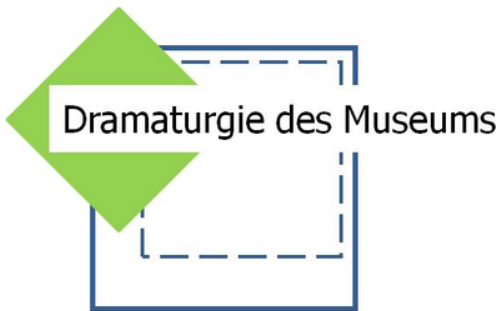Dramaturgy of the ‘Experience-Driven’ Museum
The research project is a mixed-methods study dealing with the transition of practices of cultural distinction against the backdrop of museum transformation.
We investigated the question to what extent museums of different genres can nowadays be described as ‘event-driven’ or ‘experience-oriented’ and in how far new opportunities for distinctive practices in museums emerge.
The projects focused interrelations between the perspectives of responsible museum directors and curators and corresponding exhibition designs on the one hand and visitor behavior on the other.
Theoretically, our project was based on concepts of sociology of inequality and cultural sociology, but also on theory of differentiation.

Methods
Within the framework of a mixed method design, we conducted numerous observation protocols of different museum genres e.g., on the exhibition designs as well as on the practices of visitors and museum safety guards and attendants. In selected museums, we realized guided interviews with responsible museum officials (directors, curators, exhibition designers). In addition, we used standardized visitor surveys and carried out standardized observations in three contrasting museums.
Findings
- Eventisation and experience-orientation: Eventisation in museums is based on the visitor’s active, sensory and emotional involvement which should lead to them being fascinated and having extraordinary experiences.
- This type of promise is expressed, for example, in a pronounced contextualization of exhibits or of the exhibition itself, as well as in different types of activity options (e.g., hands-on exhibits). In this way, different eventization profiles of museums and attitudes towards experience orientation become recognizable.
- Tensions: This trend towards eventisation is accompanied by various conflicting priorities. When addressing their audiences and designing exhibitions, responsible museum officials are on the one hand guided by rhetorics of sovereignty (making ‘own’ decisions, individual paths…). On the other hand, exhibition designs are guiding their audiences in terms of space and time - which can also be shown by observations of the audience. Furthermore, museum officials often have to face a dilemma concerning the characteristic value of their institution and economic, pedagogical and funding requirements. Though the development of a 'hybrid offer' is one answer to such conflicts of interest.
- Practices of Social Distinction: One thesis is that responsible museum officials set rather ambivalent signals of ‘inclusion’ and ‘exclusion’. Event-oriented situational contexts relevant to social distinction and differentiation emerge. Both, contextual and situational conditions – the staging of the exhibition and the social composition of the co-visitors – have an influence on visitors’ self-presentations as practices of differentiation and as practices of social distinction. According to our in-depth methodological reflections, the ‘distinctive nature’ of visitor practices and interactions in the sense of Bourdieu can hardly be unambiguous identified empirically within a concrete situation. This is a major challenge when investigating empirically on the reproduction of social inequality in museums and other cultural institutions. Different opportunities for evaluating visitors and social distinction emerge, but self-presentations in general and status-indicating distinctions in particular are rather entangled in a complex way.
Project duration
04/2014 until 03/2017 (36 months)
Team
Prof. Dr. Diana Lengersdorf, University of Cologne
Dr. Jennifer Eickelmann (Location Dortmund)
Julia Heidler, University of Cologne
Publications
| 2023 | Eickelmann, Jennifer; Burzan, Nicole: Challenges of multimethod and mixed methods designs in museum research [36 paragraphs]. In: Forum Qualitative Sozialforschung / Forum: Qualitative Social Research, 24(1), Art. 12, http://dx.doi.org/10.17169/fqs-24.1.3988 , Special Issue “Mixed Methods and Multimethod Social Research – Current Applications and Future Directions”. |
| 2022 | Burzan, Nicole; Eickelmann, Jennifer: Machtverhältnisse und Interaktionen im Museum. Frankfurt a.M./New York: Campus. |
| 2018 | Eickelmann, J.: Von Konzepten und ihren Kategoriensystemen: Erörterungen zu Erlebnisorientierung in Museum, Kirche und Kaufhaus als Figuration, in: Burzan, N./ Hitzler, R. (Hrsg): Typologische Konstruktionen. Prinzipien und Forschungspraxis. Wiesbaden, VS: 153-178 Click here for the article. |
| 2017 | Burzan, N.: Menschen im Museum. Theoretische Perspektiven auf empirische Erkundungen. In: Sociologia Internationalis, 55 (1), S. 1-26. |
| 2017 | Burzan, N.: Zum Wandel von Raum- und Zeitstrukturierungen am Beispiel von Museen. In: Zeitschrift für Theoretische Soziologie (ZTS), Sonderband 4: „Raum und Zeit. Soziologische Beobachtungen zur gesellschaftlichen Raumzeit“, hrsg. von Henkel, A./Laux, H./Anicker, F., S. 171-187. |
| 2017 | Burzan, N.: Eventisierung als Erscheinungsform hybrider Ereignisse? Konzeptionelle Überlegungen am empirischen Beispiel von Museen. In: Betz, G. J./Hitzler, R./Niederbacher, A./Schäfer, L. (Hrsg.): Hybride Events. Zur Diskussion zeitgeistiger Veranstaltungen. Wiesbaden: Springer VS, S. 219-231. Click here for the article. |
| 2017 | Burzan, N./Lengersdorf, D.: Ist Nicht-Teilnahme per se (Selbst-)Ausschluss? Ein Plädoyer für differenzierte Sichtweisen auf Dynamiken und Akteure am Beispiel von Museumsbesuchen. In: Lessenich, S. (Hrsg.): Geschlossene Gesellschaften. Verhandlungen des 38. Kongresses der Deutschen Gesellschaft für Soziologie in Bamberg 2016. Click here for the article. |
| 2016 | Eickelmann, J.: Wenn Kunst zum Ereignis wird. Eine Kritik der ästhetischen Praxis erlebnisorientierter Museen, in: Kauppert, M./ Eberl, H. (Hrsg.): Ästhetische Praxis. Reihe: Kunst und Gesellschaft. Wiesbaden, Springer VS: 355-376. Click here for the article. |
| 2016 | Burzan, N.: Methodenplural erhobene Daten. Am Beispiel der Erforschung von Erlebnisorientierung in Museen. In: Burzan, N./Hitzler, R./Kirschner, H. (Hrsg.): Materiale Analysen. Methodenfragen in Projekten, Wiesbaden: Springer VS, S. 95-110. Click here for the article. |


![[Translate to English:] [Translate to English:]](/storages/zentraler_bilderpool/_processed_/b/9/csm_Spektralringe_225cc86301.jpg)
